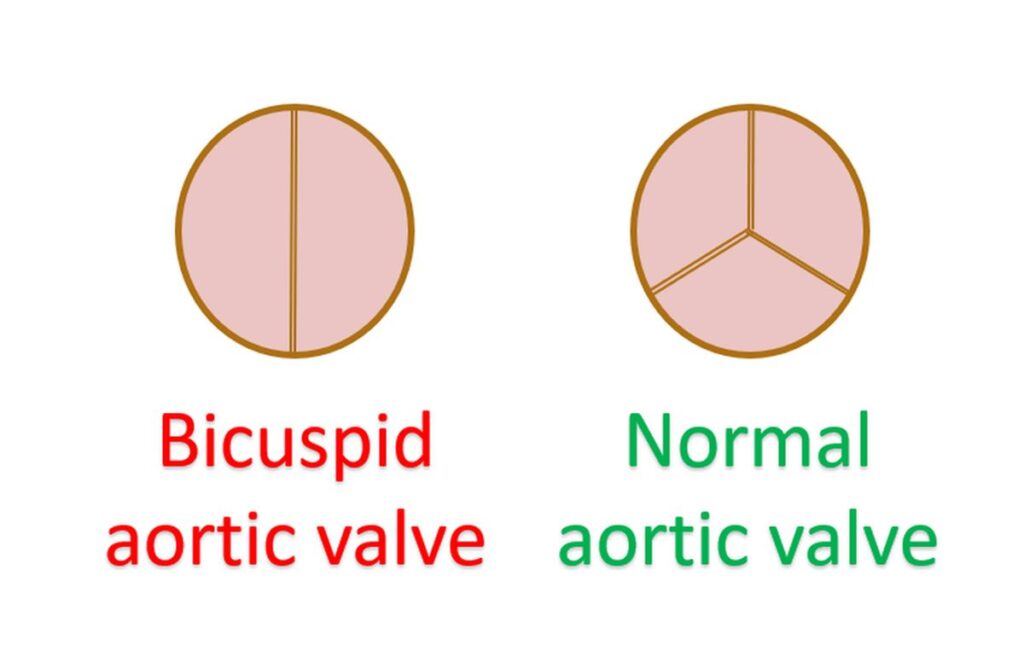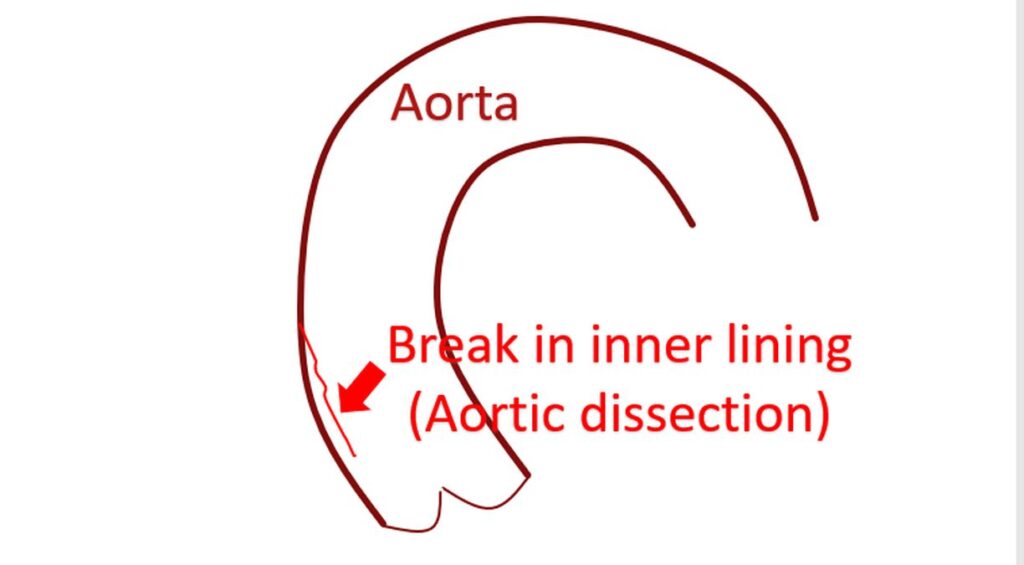What is bicuspid aortic valve?
What is bicuspid aortic valve?
Aortic valve is the valve between the left ventricle and aorta. Left ventricle is the lower left chamber of the heart. Aorta is the largest blood vessel carrying oxygenated blood to the whole body from the left ventricle. Normally, the aortic valve has three semilunar leaflets. Bicuspid aortic valve is a birth defect in which aortic valve has two leaflets instead of three. It is the commonest birth defect of the heart and can occur in about one in hundred individuals.

Bicuspid aortic valve can have a leak, known as aortic regurgitation or a narrowing, known as aortic stenosis or a combination of both. Another important association is aortopathy or disease of the aorta. Aortopathy can lead to enlargement of the aorta in the long run. This is thought to be due to a weakness in the wall of the aorta. Both aortic regurgitation and aortic stenosis can also progress in severity as age advances. Some without significant stenosis or regurgitation can be asymptomatic for long periods.
In any case, those found to have a bicuspid aortic valve need long term follow up. Echocardiogram or ultrasound study of the heart is useful in assessing progressive enlargement of aorta as well the stenosis and regurgitation of aortic valve if present. Aortic enlargement has a small risk of breaks developing in its wall in the long run. If a break is only in the inner layer, it is called aortic dissection and is a serious condition as it can progress along the extend of the aorta and compromise blood flow to vital organs like brain and heart itself. Very rarely the break can extend through and through the aortic wall. Then it is called an aortic rupture, which could be immediately fatal due to severe blood loss. Both these conditions need very urgent surgery for saving life. Fortunately, they are rare complications.

Those with severe narrowing of the aortic valve will develop chest pain and breathlessness during exertion. Severe leak of the aortic valve can also cause breathlessness on exertion. In late stages they can develop heart failure with breathlessness at rest and during sleep. Collection of fluid under the skin of the legs can develop in late stages due to heart failure.
Several persons with bicuspid aortic valve without any symptom may have it detected during routine medical check up for other reasons. This is because the abnormal valve produces a click and a murmur in addition to the normal heart sounds. These sounds may be picked up by listening with the stethoscope. Sometimes it may be detected during echocardiographic study (ultrasound scan of the heart) done for other reasons.
ECG (recording of the electrical activity of the heart) will indicate chamber enlargement when there is a leak or obstruction to aortic valve. X-ray of the chest will indicate chamber enlargements as well as collection of fluid in the lungs when they have developed heart failure. Main test is an echocardiogram which will clearly document the severity of leak and obstruction of the aortic valve. It will also estimate the pumping function of the left ventricle and enlargement of aorta if present. Computed tomographic (CT) scan is useful when there is aortic enlargement due to aortopathy. CT scan will also guide treatment in case of complications like aortic dissection and impending rupture.
Severely damaged aortic valve can be replaced by a surgery. An artificial valve can also be implanted by non-surgical methods using devices attached to small tubes introduced through a small hole made in the groin. This procedure is known as transcatheter aortic valve implantation (TAVI). Though the device is a bit costly at present, the cost is coming down with increasing use. Some persons with severe aortopathy and enlargement of aorta will need a surgery known as aortic root replacement along with aortic valve replacement. This is done by removing the enlarged portion of the aorta and inserting a synthetic graft instead.
All those who have been implanted with an artificial valve need medications to prevent clot formation within the implanted valve. If it is a biological bioprosthetic valve, these medications are needed only for a short period. But for mechanical valves, the medication is needed lifelong as they have a much higher tendency for clot formation. Blood clotting function has to be monitored at regular intervals by a test known as prothrombin time with INR estimation while on medications to prevent clot formation.



